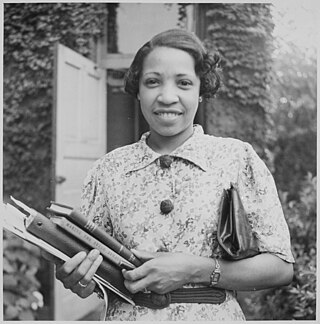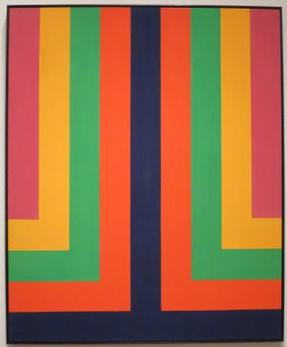
The Federal Art Project (1935–1943) was a New Deal program to fund the visual arts in the United States. Under national director Holger Cahill, it was one of five Federal Project Number One projects sponsored by the Works Progress Administration (WPA), and the largest of the New Deal art projects. It was created not as a cultural activity, but as a relief measure to employ artists and artisans to create murals, easel paintings, sculpture, graphic art, posters, photography, theatre scenic design, and arts and crafts. The WPA Federal Art Project established more than 100 community art centers throughout the country, researched and documented American design, commissioned a significant body of public art without restriction to content or subject matter, and sustained some 10,000 artists and craft workers during the Great Depression. According to American Heritage, “Something like 400,000 easel paintings, murals, prints, posters, and renderings were produced by WPA artists during the eight years of the project’s existence, virtually free of government pressure to control subject matter, interpretation, or style.”

Lois Mailou Jones (1905–1998) was an artist and educator. Her work can be found in the collections of the Smithsonian American Art Museum, The Metropolitan Museum of Art, the National Museum of Women in the Arts, the Brooklyn Museum, the Museum of Fine Arts, Boston, Muscarelle Museum of Art, and The Phillips Collection. She is often associated with the Harlem Renaissance.

The Corcoran School of the Arts and Design is the professional art school of the George Washington University, in Washington, D.C. Founded in 1878, the school is housed in the Corcoran Gallery of Art, the oldest private cultural institution in Washington, located on The Ellipse, facing the White House. The Corcoran School is part of GW's Columbian College of Arts and Sciences and was formerly an independent college, until 2014.
The Washington Color School, also known as the Washington, D.C., Color School, was an art movement starting during the 1950s–1970s in Washington, D.C., in the United States, built of abstract expressionist artists. The movement emerged during a time when society, the arts, and people were changing quickly. The founders of this movement are Morris Louis and Kenneth Noland, however four more artists were part of the initial art exhibition in 1965.
Matthew Langley is a New York City painter and photographer whose work has focuses on space, compression, volume and sentience (painting) and Vanishing American DIY culture (photography). This photographic series is titled Vanishing Culture USA.

Howard Mehring (1931–1978) was a twentieth-century painter born in Washington, D.C.
Paul (Allen) Reed was an American artist most associated with the Washington Color School and Color Field Painting.
Sylvia Snowden is an African American abstract painter who works with acrylics, oil pastels, and mixed media to create textured works that convey the "feel of paint". Many museums have hosted her art in exhibits, while several have added her works to their permanent collections.
Lowell Blair Nesbitt was an American painter, draughtsman, printmaker, and sculptor. He served as the official artist for the NASA Apollo 9, and Apollo 13 space missions; in 1976 the United States Navy commissioned him to paint a mural in the administration building on Treasure Island spanning 26 feet x 251 feet, then the largest mural in the United States; and in 1980 the United States Postal Service honored Lowell Nesbitt by issuing four postage stamps depicting his paintings.

Edward Dugmore was an abstract expressionist painter with close ties to both the San Francisco and New York art worlds in the post-war era following World War II. Since 1950 he had more than two dozen solo exhibitions of his paintings in galleries across the United States. His paintings have been seen in hundreds of group exhibitions over the years.

Raoul Middleman was an American painter known for his "provocatively prolific work--primarily traditional, including figure studies, landscapes, and still lifes--and for being a megawatt personality." Middleman was a member of the Maryland Institute College of Art faculty from 1961 on. In a 2009 Baltimore City Paper article Bret McCabe described Middleman's paintings as featuring "... expressive strokes, a tight control over an earthy palette, a romantic tone slightly offset by a penetrating eye —becomes distinctive even if you haven’t seen them before, so strongly does he articulate his old-fashioned sensibility in his works.”
Martha Jackson Jarvis is an American artist known for her mixed-media installations that explore aspects of African, African American, and Native American spirituality, ecological concerns, and the role of women in preserving indigenous cultures. Her installations are composed using a variety of natural materials including terracotta, sand, copper, recycled stone, glass, wood and coal. Her sculptures and installations are often site-specific, designed to interact with their surroundings and create a sense of place. Her works often focus on the history and culture of African Americans in the southern United States. In her exhibition at the Corcoran, Jarvis featured over 100 big collard green leaves, numerous carp and a live Potomac catfish.

Carol Brown Goldberg is an American artist working in a variety of media. While primarily a painter creating heavily detailed work as large as 10 feet by 10 feet, she is also known for sculpture, film, and drawing. Her work has ranged from narrative genre paintings to multi-layered abstractions to realistic portraits to intricate gardens and jungles.

Samuel Burtis Baker, commonly known as Burt Baker, was an American artist and teacher, best known for his portrait paintings.
Joan Belmar is an American artist. He is a painter who uses a three dimensional technique using painting and collage processes with both painted and untreated Mylar/paper strips in circles and curvilinear shapes variations which then produced different and changes degrees of transparency, as light and the viewer move in relation to the work. He was a Washington, DC Mayor's Art Award Finalist in 2007 as an outstanding emerging artist. The DC Commission on the Arts & Humanities has also awarded him with an Artist Fellowship Program grant in 2009, and in 2011 he was awarded an Individual Artist Grant by the Arts and Humanities Council of Montgomery County, MD. He is a two-time recipient of the Maryland Arts Council Individual Artist Grant in Visual Arts: Painting, in 2010and 2013.
James Frances Hilleary was a working architect and painter who gained prominence as a member of the Washington Color School movement.
Michelle Lisa Herman is an American contemporary and conceptual artist who works with sculpture, video, installation, and painting. Herman's work draws on theoretical and philosophical research, feminist and disability politics, comedy, and conceptualism and investigates ideas of agency and invisible systems of power in technologically mediated society. Herman is currently based in Washington, DC.
Ed McGowin is an American painter and sculptor based in New York City. Throughout his career, McGowin has produced works in a wide variety of media that have been installed and exhibited in galleries, museums and public spaces. He has taught at institutions such as the Corcoran School of the Arts and Design, the University of Southern Mississippi, and the State University of New York system. The first major publication of his work, Name Change: One Artist – Twelve Personas – Thirty Five Years, was published by the Mobile Museum of Art in 2006 and distributed by the University Press of Mississippi.

Minnie Klavans was an American artist whose work is held by the Smithsonian Museum of American Art, the Baltimore Museum of Art, the American University Museum, among others.

Samuel Joseph Brown Jr. (1907–1994) was a watercolorist, printmaker, and educator. He was the first African American artist hired to produce work for the Public Works of Art Project, a precursor to the Work Progress Administration's Federal Art Project. Brown often depicted the lives of African Americans in his paintings. He worked primarily in watercolor and oils, and he produced portraits, landscapes and prints.







